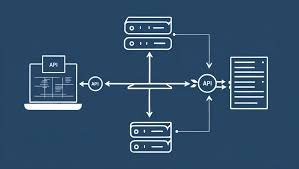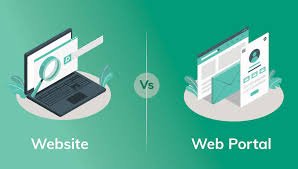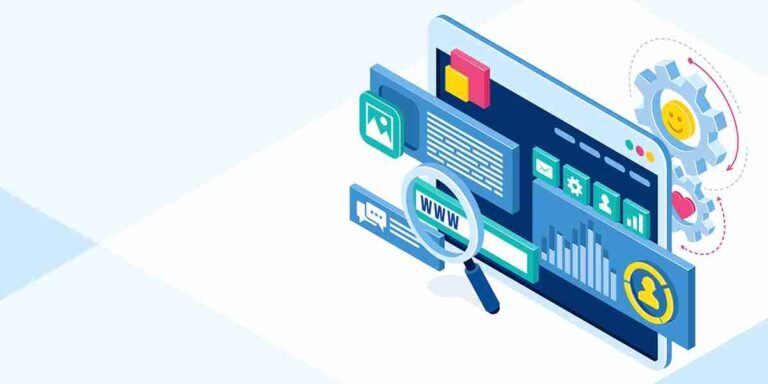The Key Elements of Successful Web Portal Design

A well-designed web portal is the backbone of an effective online presence for businesses, organizations, and service providers. It enhances user experience, improves efficiency, and fosters customer engagement. In this article, we’ll explore the key elements that contribute to the success of web portal design and how businesses can leverage these components to build portals that are both functional and user-friendly.
The design of a web portal plays a critical role in its effectiveness, as it serves as the main interface between users and the services or information offered. A successful web portal not only provides a seamless user experience but also optimizes the functionality, scalability, and security necessary for businesses to thrive in a digital world. Below are the key elements that make up a successful web portal design.
- User-Centered Design (UX/UI) User experience (UX) and user interface (UI) design are paramount to the success of any web portal. A well-designed UI ensures that users can navigate the portal intuitively, while a thoughtful UX design takes into account user behavior, needs, and expectations. Elements such as clear navigation, consistent layout, and visually appealing design ensure that users can easily interact with the portal and accomplish their goals without frustration.
- Key Considerations: Simple navigation, responsive design, minimal clutter, clear call-to-action buttons, and a user-friendly interface.
- Personalized Experience Offering a personalized user experience helps businesses engage users more effectively. Personalization can be achieved by tailoring the content, layout, and recommendations based on user data, preferences, and behavior. This could include custom dashboards, personalized product recommendations, and targeted content that resonates with individual users.
- Key Considerations: User login systems, customization options, content recommendations, and data-driven personalization.
- Scalability and Flexibility As businesses grow and their needs evolve, web portals must be designed with scalability in mind. A scalable portal can handle increasing user traffic, a growing product catalog, and expanding features without compromising performance. Flexibility ensures that the portal can be easily updated and modified to meet changing requirements, whether that involves adding new features, services, or integrations.
- Key Considerations: Modular architecture, cloud infrastructure, and the ability to add or remove features as needed.
- Mobile Optimization In today’s mobile-first world, it’s essential that web portals are optimized for mobile devices. A mobile-optimized design ensures that users can access the portal seamlessly from smartphones and tablets, providing them with the same high-quality experience they would get from a desktop. This includes touch-friendly interfaces, faster load times, and responsive design elements that adjust to different screen sizes.
- Key Considerations: Mobile-first design, responsive layouts, quick loading times, and mobile-specific functionalities.
- Robust Security Features Security is a top priority for any web portal, especially when handling sensitive user data and transactions. A secure portal protects user information from unauthorized access, data breaches, and cyberattacks. Encryption, secure login protocols, two-factor authentication, and regular security audits are some of the essential components of a secure web portal.
- Key Considerations: Data encryption, SSL certificates, two-factor authentication, secure payment gateways, and GDPR compliance.
- Streamlined Navigation One of the primary goals of web portal design is to make it easy for users to find what they’re looking for. This requires clear, well-organized navigation menus that lead users to the most important sections of the portal without confusion. A logical information architecture and clear call-to-action buttons help guide users through the portal, allowing them to navigate quickly and efficiently.
- Key Considerations: Clear menu structure, search functionality, breadcrumbs, and intuitive links.
- Fast Load Times Slow load times are a major deterrent for users, leading to frustration and increased bounce rates. Web portals need to be optimized for speed to ensure smooth performance, regardless of the device or internet connection. Minimizing large files, using caching strategies, and optimizing code can help improve the portal’s load time.
- Key Considerations: Image optimization, caching, content delivery networks (CDNs), and reduced file sizes.
- Search Functionality Efficient search functionality is a must-have feature for a successful web portal, particularly if the portal contains a large volume of content, products, or services. Users should be able to search easily and find relevant information quickly. Advanced search filters, auto-suggestions, and sorting options enhance the usability of the portal and improve the overall user experience.
- Key Considerations: Search bar, filters, keyword matching, and auto-completion.
- Third-Party Integrations Web portals often need to integrate with third-party tools and services, such as payment gateways, customer relationship management (CRM) systems, or marketing platforms. Seamless integration with these services helps streamline operations and provide a better user experience. Whether it’s through APIs or other integrations, the ability to connect with external services is critical.
- Key Considerations: API integrations, third-party service compatibility, and seamless data exchange.
- Analytics and Reporting The ability to track user behavior, engagement, and other key metrics is essential for optimizing a web portal. Analytics and reporting features enable businesses to gain insights into how users interact with the portal, identify pain points, and make data-driven improvements. These tools also provide valuable information that can be used to refine marketing strategies and enhance user experience.
- Key Considerations: Built-in analytics dashboards, custom reports, user tracking, and performance metrics.
- Multi-Language and Multi-Currency Support For global businesses, a successful web portal should support multiple languages and currencies, allowing users from different regions to interact with the portal in their preferred language and make transactions in their local currency. This helps increase accessibility, improve customer experience, and expand the reach of the business.
- Key Considerations: Localization, translation tools, multi-currency options, and region-based customization.
- Effective Content Management System (CMS) A powerful CMS allows businesses to easily manage and update the content displayed on the portal. From blog posts and product descriptions to user-generated content, the CMS simplifies the process of updating and maintaining a large volume of content. An intuitive interface ensures that non-technical users can manage the portal’s content with ease.














